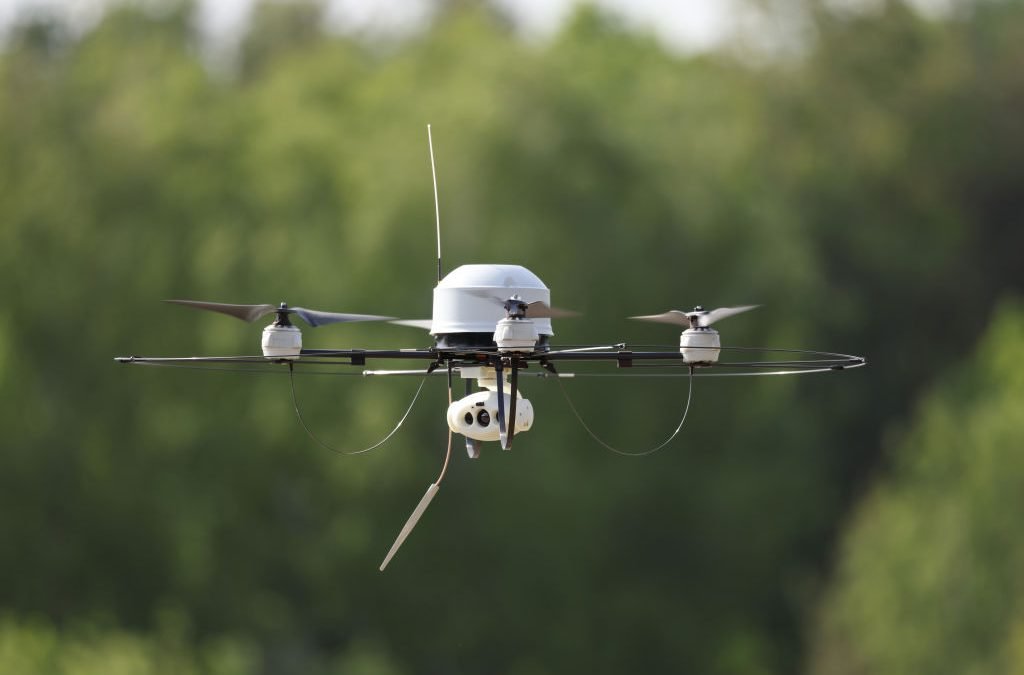NEW DELHI: Cybercriminals and foreign nation-state actors are increasingly targeting drone technologies, making Unmanned Aerial Vehicles (UAVs) and counter-UAV systems vulnerable to cyberattacks. As drones play a vital role in military operations worldwide, the fight is no longer just in the skies—it has moved online.
Drone Hacks Surge Amid Global Conflicts
According to cybersecurity firm Resecurity, cyberattacks on drone manufacturers have spiked, especially during geopolitical conflicts like the Russia-Ukraine war and the Israel-Hamas confrontation. Between Q3 2024 and Q1 2025, the demand for stolen military and intellectual property (IP) related to UAVs surged on dark web forums. Cybercriminals and state-sponsored hackers are after classified drone data, which could give adversaries a tactical edge in warfare.
China Allegedly Behind UAV Cyber Espionage
Evidence suggests that China is actively hacking UAV vendors, with Taiwanese drone manufacturers being prime targets. Reports indicate that Chinese-speaking hacking groups are conducting espionage operations, likely to steal drone technology. Similar attacks have been observed in North America, the Middle East, the UK, and the EU.
Beyond cyberattacks, foreign actors are also targeting drone engineers and scientists. Resecurity’s research indicates that cybercriminals are focusing on identifying the buyers of UAV and counter-UAV technologies. This could be reconnaissance for future cyberattacks or human intelligence (HUMINT) efforts to gain deeper access to sensitive defense information.
READ FULL REPORT: The Rise of Cyber Espionage: UAV and C-UAV Technologies as Targets
The Biggest Cyber Threats to UAVs
Drones offer undeniable advantages in surveillance, combat, and logistics, but they come with serious cybersecurity risks. Some of the biggest threats include:
- Hacked Surveillance: Enemy hackers can tap into UAV camera feeds to spy on military installations and troop movements.
- Weaponized Drones: Armed UAVs present direct threats to military and civilian targets, especially in asymmetric warfare.
- Drone Hijacking: Cyberattacks can take over UAV control systems, rerouting missions or even crashing drones.
- Swarm Attacks: Coordinated drone swarms are difficult to neutralize, overwhelming defenses.
- Supply Chain Risks: If manufacturers use compromised components, drones could be preloaded with malware.
High-Profile Cyber Attacks on UAV Makers
Recent cyberattacks highlight the growing threat to the drone industry:
- Prana Network Hacks Iranian UAV Firm: Hackers breached Iranian firm IRGC Sahara Thunder, leaking details about the production of Shahed-136 attack drones in Russia.
- NoName057 Targets UK Drone Companies: The pro-Russian hacker group disrupted British drone manufacturers with DDoS attacks.
- BlackCat Ransomware Hits Autonomous Flight Technologies: This UAV company, partnered with NASA and Airbus, suffered a major cyber breach, allegedly selling stolen data to foreign buyers.

Terrorist Groups and Drug Cartels Are Getting in on the Action
Terrorist organizations and drug cartels are also exploiting drone technology. Resecurity has identified ISIS-linked groups discussing UAV engineering and OPSEC (operational security) tactics.
Drug cartels use drones for smuggling, surveillance, and even armed attacks. They modify commercial drones to transport drugs across borders undetected and use UAVs to monitor law enforcement activity.
War Over the Skies—and Cyberspace
Foreign hackers are now targeting Ukraine’s Delta battlefield management system, which uses UAVs to stream real-time combat data. Threat actors are attempting to breach the system to extract intelligence and disrupt military operations.
How UAV Makers Can Fight Back
To defend against cyberattacks, UAV vendors need to adopt stronger security measures:
- Build security into drone design to prevent hacks before they happen.
- Use encrypted communications to stop hackers from hijacking drone feeds.
- Conduct regular cybersecurity audits to find and fix weak points.
- Vet supply chain partners to ensure no compromised components are used.
- Train employees in cybersecurity to prevent social engineering attacks.
As drones continue to play a critical role in warfare and security, cyberattacks will only grow more sophisticated. Governments, defense contractors, and cybersecurity experts must work together to safeguard UAV technology. The future of drone warfare depends not just on superior hardware but also on staying ahead of cyber threats.


